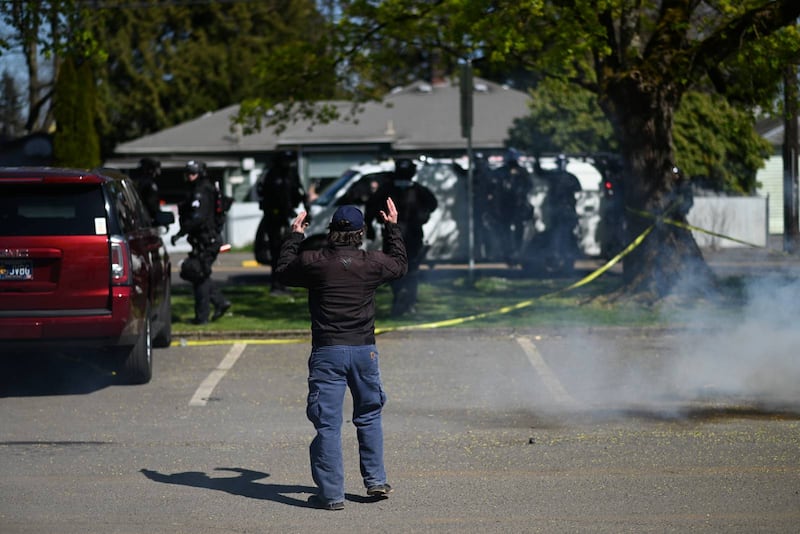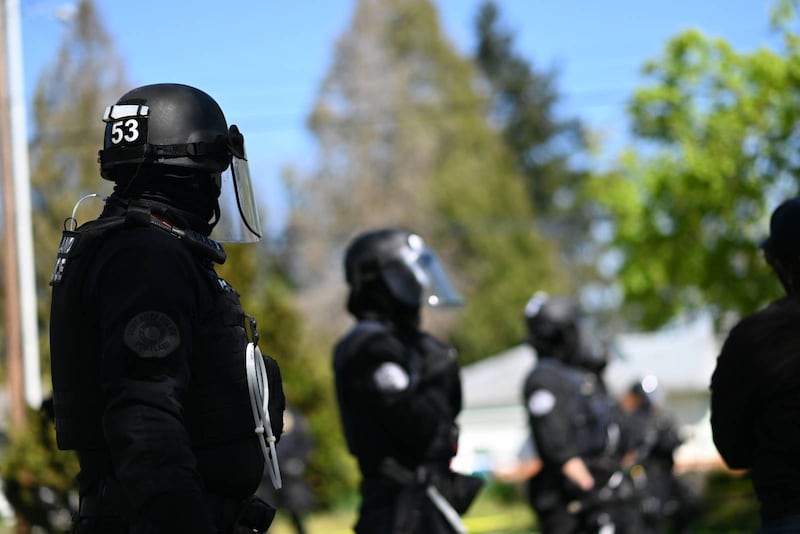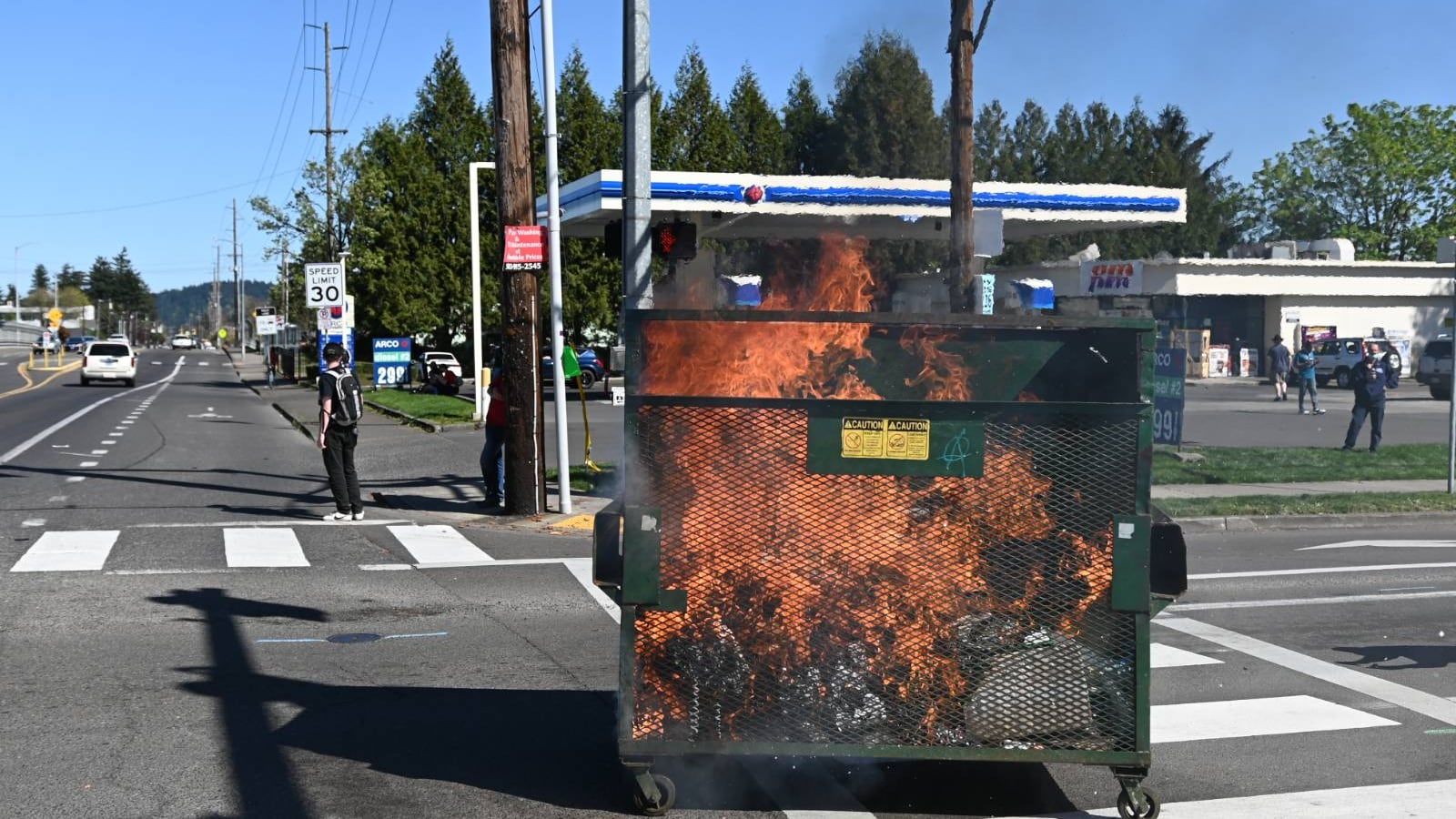A verdant Southeast Portland park and the streets surrounding it became the latest location for a standoff between protesters and police, in the wake of an officer shooting a man in the Lents neighborhood.
Demonstrators stuffed newspapers into a dumpster and set the container ablaze. Police officers deployed mace at the crowd’s vanguard. Protesters hurled water bottles and twigs at officers.
Yet the first Portland police killing since late in 2019 drew only about 100 people to the scene, roughly the same number that have been targeting government buildings since the April 11 killing of Daunte Wright in Minnesota.
The limited numbers may reflect the location and circumstances of the shooting: It occurred in Lents, a neighborhood at the far southeast edge of the city, and police said the victim was an armed white man. Yet the crowd was more diverse than at many recent protests—both in racial demographics and outfits, which suggested they were not veteran protesters.

Activists had already planned events in downtown tonight, and both cops and demonstrators seemed on edge heading into the evening. A police statement Friday evening said that the Portland Police Bureau intended to respond to downtown protests jointly with Portland Fire & Rescue, citing windy and dry conditions.
“Exacerbating the danger is the news that Multnomah County is now under a National Weather Service Red Flag Warning for extreme fire danger due to dry conditions, heat, and high winds,” the bureau wrote. “If any burning is attempted, it could cause extreme risk to life safety.”
In the fragile social climate during the trial of Derek Chauvin, the news of police killings across the nation have now become flashpoints for uprisings.
By late morning, crowds formed on the side of Lents Park, about 200 yards from where the body of the shooting victim still lay uncovered behind red police tape. The assembled people included several survivors of violence, including Letha Winston, whose son Patrick Kimmons was killed by Portland police in 2018, and Demetria Hester, who was assaulted by Jeremy Christian the night before he committed two murders in 2017. Both led the crowd in chants: “All cops are bastards!”

They were joined by a collection of local residents not dressed in the standard black bloc attire typical of Portland’s twilight “direct actions” that vandalize buildings.
Portland police ordered crowds to disperse south by 11:30 am, enraging the crowd even more. “They just declared an unlawful assembly at a mourning!” someone yelled. The crowd continued to grow in size despite PPB warnings via a long range acoustic device.
At 3:06 pm, officers from the rapid response team arrived via riot vans to replace the beat cops holding the perimeter. Within minutes, the original police line moved back, covering their retreat under a volley of smoke canisters, flash bangs, and impact munitions.
The protesters moved to the intersection of Southeast 92nd Avenue and Holgate Street, setting fire to a dumpster and allowing traffic to move slowly through the crowd. Most left the area after altercations with passing motorists attempting to travel through the area.
By nightfall, the 7-Eleven on the north side of Lents Park was installing a defense more commonly seen near downtown courthouses: plywood siding.
